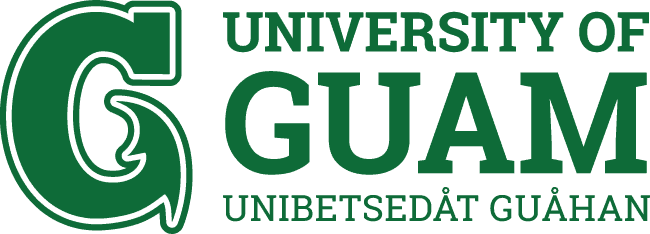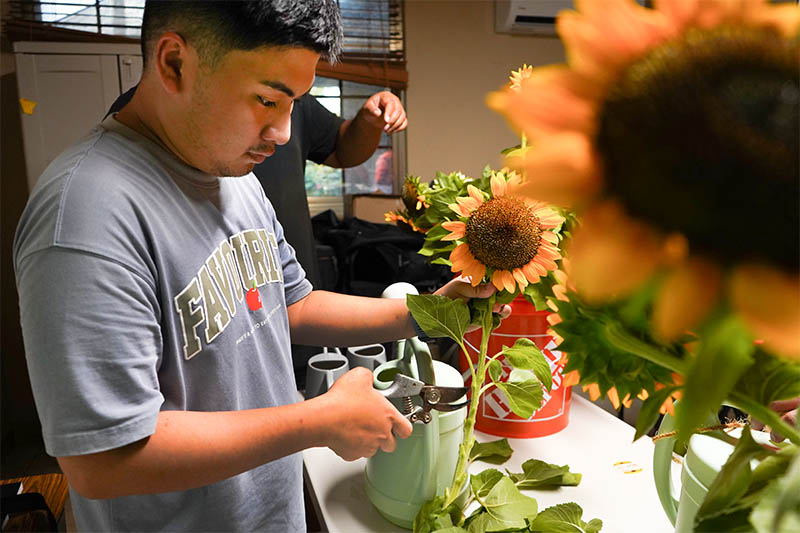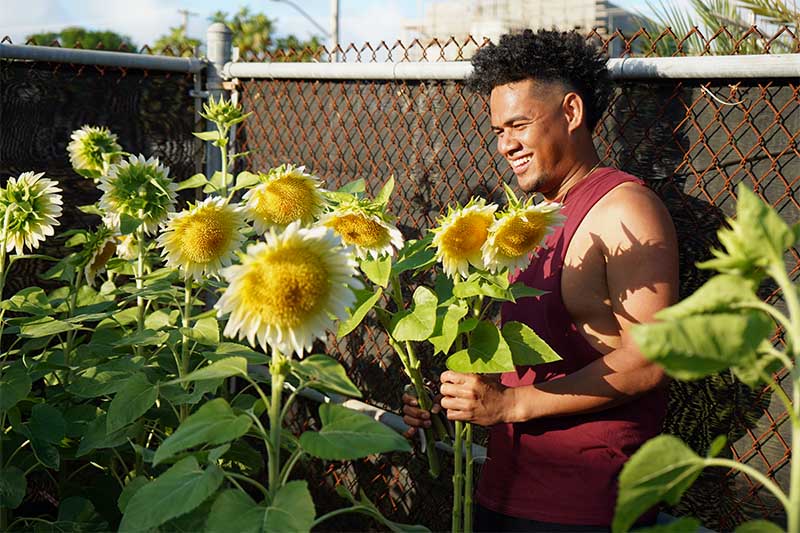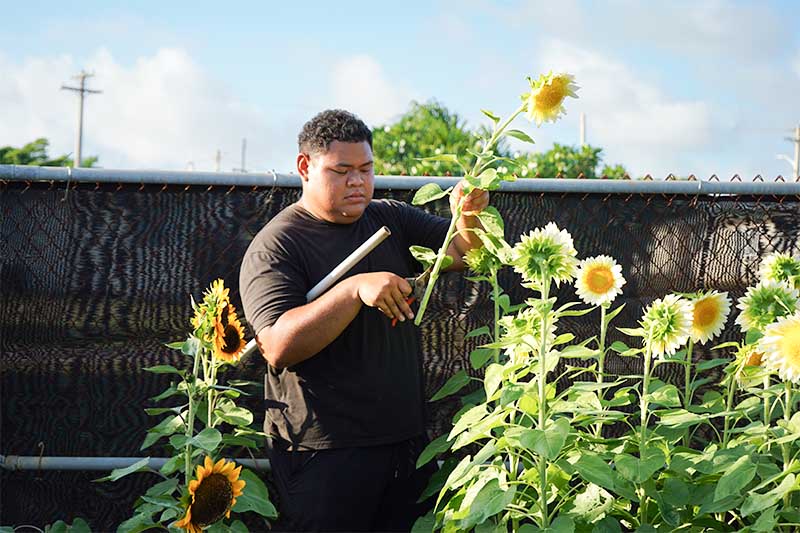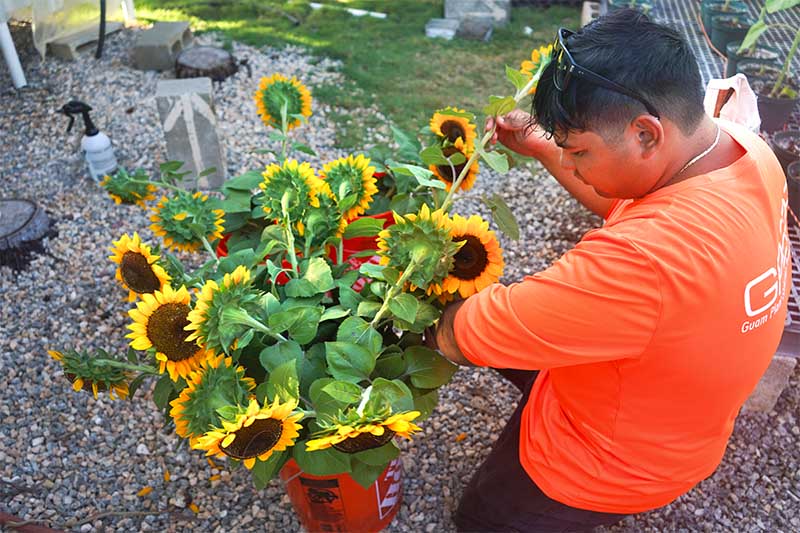Ag students grow market-ready sunflowers with surprising results
Ag students grow market-ready sunflowers with surprising results
Ag students grow market-ready sunflowers with surprising results
8/5/2025
University of Guam students in last semester’s Ornamental Crop Production in the Tropics (AL-486) course have completed a hands-on experiment that not only tested their agricultural skills, but also revealed promising opportunities for ornamental crop production on the island.
A group of senior Tropical Agriculture Production majors under the College of Natural & Applied Sciences — Lyle Andrew, Timotheo Silbanuz, Franklin Fujihira, Joshua Artuz, and Eric Delfin Jr. — were tasked by professor Dr. Jim McConnell to create a small-scale ornamental crop nursery for a specific flower. The goal was to sustain production of the flower from sowing to harvest resulting in a market-ready product.
“As a class, we decided to grow sunflowers,” Andrew said. “We wanted to see how long it would take our sunflowers to grow from seeds to harvest and compare it to studies done in mainland America.”
The student team chose three specific cultivars of sunflowers for the study — ProCut Orange Excel, ProCut Red/Lemon Bicolor, and ProCut White Lite — and planted seeds in February that were generously provided by Guam farmer Thomas Camacho.
The assignment required thinking through common nursery challenges, such as irrigation, pests, fertilization, and wind. They built bench structures and implemented wind protection strategies, including rope stabilizers and perimeter windbreaks, to support the delicate sunflower stems. To combat aphids, caterpillars, and whiteflies, they applied neem oil, a natural oil that is effective against a wide range of insects.
“This assignment made us research, plan, and execute a project that would benefit more than just the class,” Fujihira said.
Surprising results
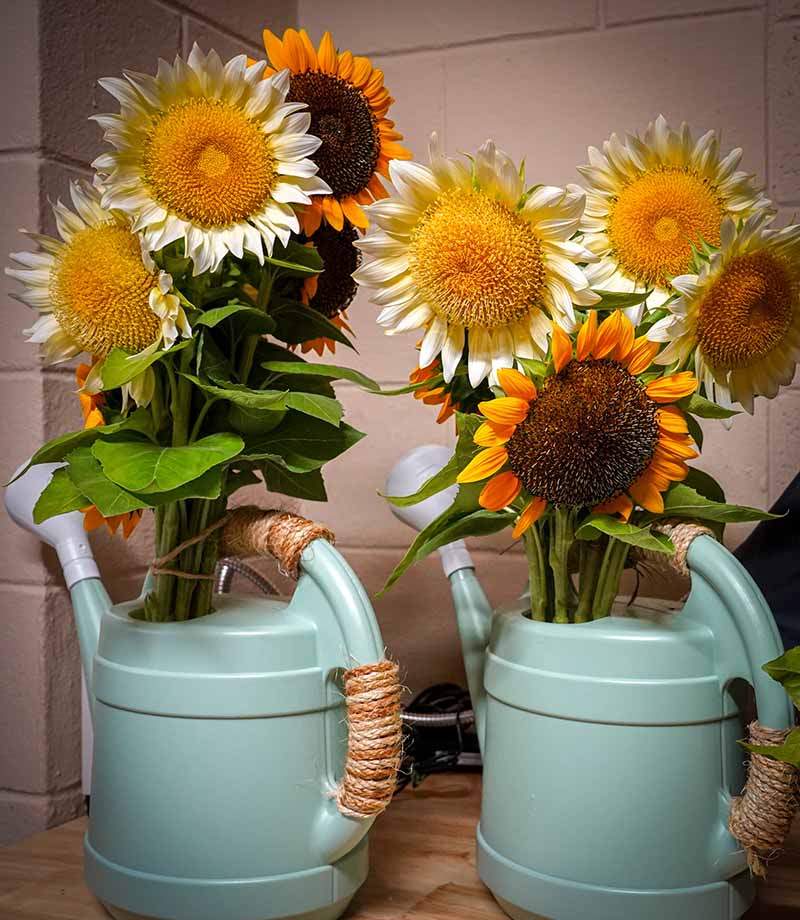 After having planted 96 seeds, the team recorded 91 that successfully sprouted.
After having planted 96 seeds, the team recorded 91 that successfully sprouted.
“The reported germination rate is 80 percent," Delfin said, "but our data showcased that in Guam’s climate, during the dry season, the success rate was greater than 90 percent in a potted environment."
Even more surprising was the crop’s early maturity. The flowers were ready for harvest just 40 days after planting — five to 20 days earlier than projected by the seed company. Guam’s climate accelerated the growth rate and maturity for these three varieties.
“We could do another experiment during the rainy season and see if there are any differences in the amount of time it takes from seed to harvest. This would show farmers the desirable times of year to grow sunflowers,” Andrew said.
Their class assignment culminated in producing a final marketable product. Who better to appreciate their hard work and receive bouquets than UOG’s leadership? The students spent a day cutting and arranging the sunflowers they’d grown into watering-can vases to brighten the offices of UOG President Anita Borja Enriquez and CNAS Dean Rachael Leon Guerrero.
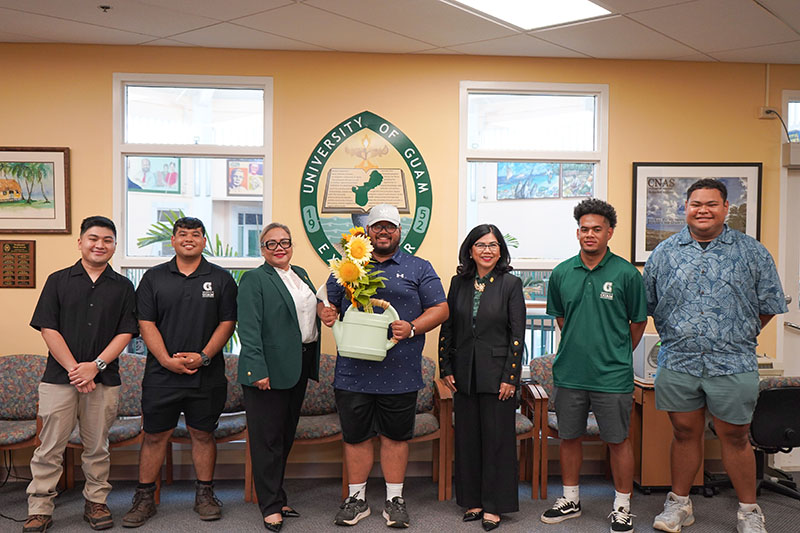 |
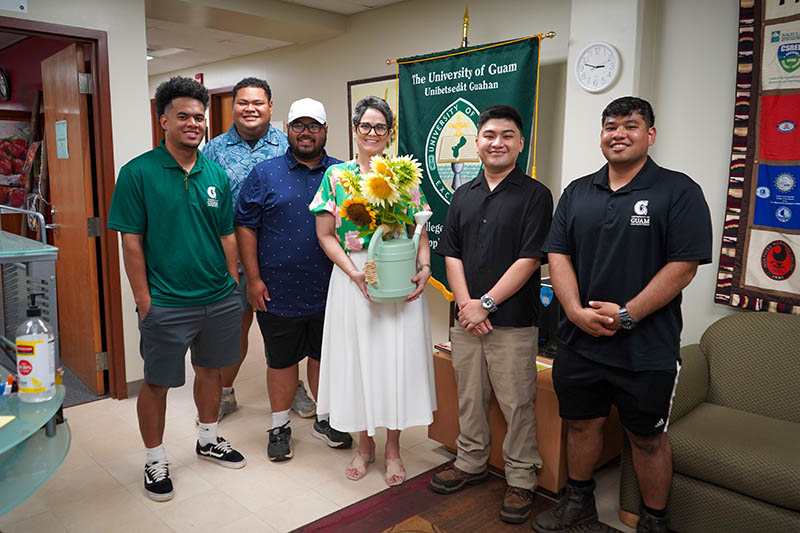 |
From classroom to community
The students said their results could inspire farmers to consider growing sunflowers or other ornamental crops here in Guam. As a short-term crop, sunflowers could potentially provide multiple revenue-generating harvests per year or could be quickly grown as needed as a gap crop if another crop fails.
Additionally, Artuz said he hopes their project will inspire more schools to develop hands-on agricultural experiences for the younger generations. Sunflowers would make an ideal project for middle and high school classes, as the crop cycle can be completed within a semester. Delfin, an officer of UOG’s Agriculture & Life Sciences Club, said he is already considering continuing sunflower cultivation on campus as a means of generating funds for the club.
With high germination rates, rapid growth, and promising marketability, sunflowers and similar ornamental crops present a viable opportunity for Guam. The success of the sunflower nursery project by UOG’s Tropical Agriculture Production students highlights both the potential for ornamental crop production in Guam’s climate and the value of hands-on learning in agricultural education.

